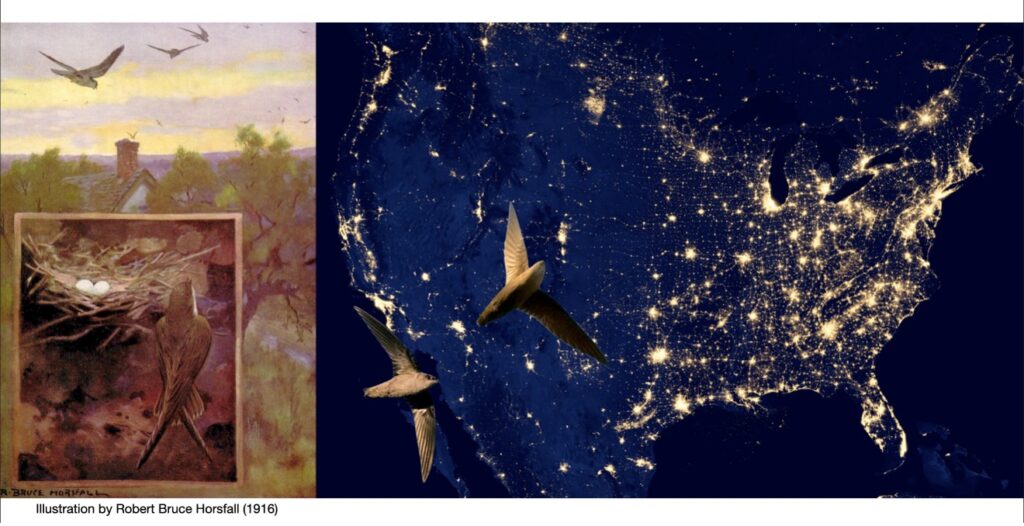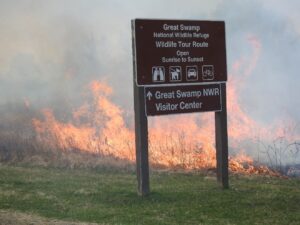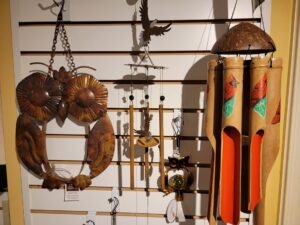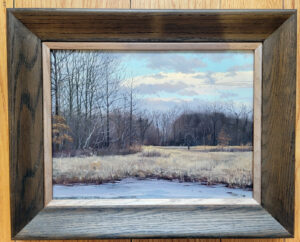The Effect of Light Pollution on Chimney Swift Roosting behavior
Presenters: Emma Dougherty and Elise Morton from Fairleigh Dickinson University
Light pollution is an anthropogenic factor that is rapidly increasing, posing serious threats to wildlife. Artificial light at night (ALAN) has been shown to impact behaviors and population dynamics of wildlife, often with negative consequences. One species of concern that we predict to be impacted by ALAN is the Chimney swift (Chaetura pelagica), a small aerial insectivore distributed across the Americas that often utilizes artificial structures such as chimneys for nesting, breeding, and roosting. Once abundant across its range, the Chimney
swift population has been steadily declining and is currently listed as Vulnerable by the IUCN, yet the causes remain unknown. Based on the finding that coordinated entry of roosting sites is signaled by the time of sunset, we hypothesized that ALAN would affect the roosting behavior of Chimney swifts, specifically that higher levels of ALAN will cause delayed entry into roosting sites and extend the time of foraging. To test our hypothesis, we recorded the time of entry into roosting sites distributed along a light pollution gradient in the New York Metropolitan Area and New Jersey.
Join us on April 16th from 1:30-3pm and we will share with you what we found, and how we can work together to learn how to conserve this amazing species.
This will be a hybrid program, both in-person at the Pavilion at the Visitor Center and also virtually on Zoom. Registration is required for both in-person and Zoom.
Register here at https://ttsu.me/swifts
The Refuge Photo Contest sponsored by Friends of Great Swamp National Wildlife Refuge returns for 2023!
All amateur photographers are invited to submit a total of five digital photos in any of the following categories: Raptors, Birds Other than Raptors, Landscapes, Pollinators & Other Insects, Plants and Fungi, and Other Wildlife. A special youth category is available for kids 16 and under. Pictures must be taken within the Great Swamp National Wildlife Refuge boundaries. All photos must be submitted online at the Friends website where the official entry form and detailed rules are posted.
Start snapping and get ready to share those special photos you’ve taken at Great Swamp National Wildlife Refuge! Deadline is July 4, 2023 with an award ceremony planned for September.
Please remember that putting the well-being of wildlife first must be every photographer’s aim. The Friends of Great Swamp NWR strongly supports the North American Nature Photography Association (NANPA) Principles of Ethical Field Practice. This means always putting the welfare of the subject before yourself or the photograph.
You can find the Refuge Photo Contest under the Photo Contest menu on the Friend’s website or by clicking here.
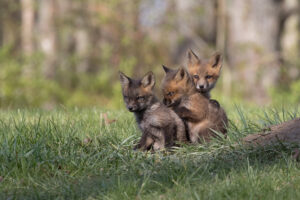
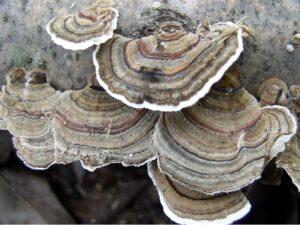
Second Sunday, March 12, 2023; 1:30- 3:00 PM
Over the past few years, the public has become increasingly aware that the world of fungi is as mysterious as it is fascinating. Fungi live everywhere…in all kinds of organisms, in the air, in water, and even inside solid rock. Remarkably, eighty-five percent of all plants on earth depend on fungal connections that benefit both partners.
Dorothy Smullen is a retired high school science teacher with a Masters in Biology. She is the past president of the New Jersey Mycological Association and a former board member of Friends of Great Swamp National Wildlife Refuge. Dorothy is also a teacher/naturalist for the New Jersey Audubon, and is a much sought-after speaker on many aspects of the natural world, including fungi, botany, insects, birds, and frogs.
In her program Fungi for the Future, Dorothy will discuss fungi’s amazing role in history, medicine, and the future of our ecosystem. You don’t want to miss this opportunity to hear from Dorothy Smullen, an expert in the incredible world of fungi.
This will be a hybrid program, both in-person at the Helen C. Fenske Visitor Center Library and virtually on Zoom. Registration is required for both. Sign up at ttsu.me/fungi
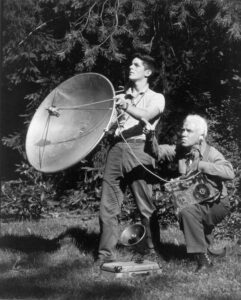
Second Sunday, February 12, 2023; 1:30 pm
Over the past decades, bird watching has quietly emerged as America’s new national pastime, enjoyed today by 45 million enthusiasts, ranging from backyard novices to roving field experts. But bird “watching” has evolved, as today’s birders increasingly use bird song (and high tech tools) to enhance their identification skills.
Cornell University’s Macaulay Library is renowned for its exhaustive collection of world-wide bird song recordings. For over 70 years, Randy Little has been closely associated with the Lab of Ornithology, and is the author of “For the Birds: Cornell Lab of Ornithology at Sapsucker Woods”. Published in 2003, Randy’s book chronicles the over 100 year history of the lab, including the technology developed at Cornell to achieve high quality bird song recordings.
A Cornell graduate who majored in Electrical Engineering, Randy has traveled with well-known ornithologists to record birds across North America. Because of their collective efforts and field work, today’s birding public readily have the tools to advance their identification skills to a whole new level.
Whether you are a brand new or a long-time birder, you don’t want to miss this unique opportunity to hear from Randy Little, a true pioneer in the fascinating world of bioacoustics technology.
This will be a hybrid program, both in-person at the Helen C. Fenske Visitor Center Library and virtually on Zoom. Registration is required for both. Sign up at ttsu.me/birdcalls
Sunday, January 8, 1:30pm on Zoom
Habitat management is a complex art and science. Adding fire, in the form of controlled burns, makes the situation even more interesting.
Join BRETT GORE of the US FWS Fire Management Team, stationed at Great Swamp, and learn more about staff training, the decision making process, and the risk and benefit of fire on the landscape.
This program is being held virtually on Zoom. Registration is required. Sign up online: ttsu.me/firecrew
Zoom logon information will be sent to all registrants at noon on January 8.
Sponsored by Friends of Great Swamp National Wildlife Refuge with generous support from the Marta Heflin Foundation.
Thursday, December 1 – Sunday, December 4 Get a jump start on your holiday shopping, avoid the crowds, and support Great Swamp National Wildlife Refuge. All shoppers will receive a 10% discount on their purchases, and if you are a Friends member, take 20% off. Not a member? Not to worry. You may join on the spot and your 20% discount is effective immediately! We have lots of new merchandise and a nice selection of hand-crafted items including pottery, hand crocheted scarves, hand-knitted hats, bird carvings and holiday ornaments. Plus, a large selection of jigsaw puzzles for a great gift or to entertain your holiday guests.
An extra feature of this year’s double discount days – art!
We have a number of donated art pieces for sale including Audubon prints, framed Great Swamp watercolors and oils by local artists, NJ Duck Stamp prints, Knowles fine china plates, and Lenox porcelain bird figurines. This is a unique opportunity to find a special gift for someone – or a treat for yourself. Your purchases help fund projects at Great Swamp National Wildlife Refuge such as the White Oak Trail Improvement Project, Wilderness Area interpretive signs, turtle research and invasive species control. Thank you for your support. Visitor Center / Nature Shop hours are Thursday and Friday, 10am to 4pm; Saturday, 11am to 3pm and Sunday, 10am to 4pm.


